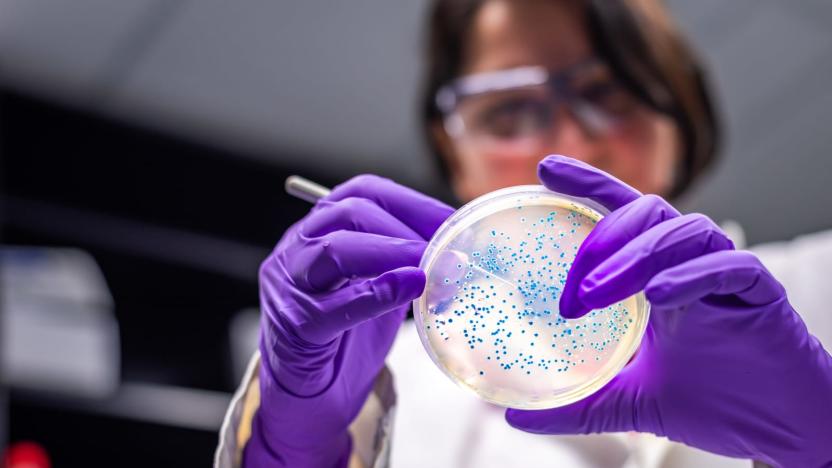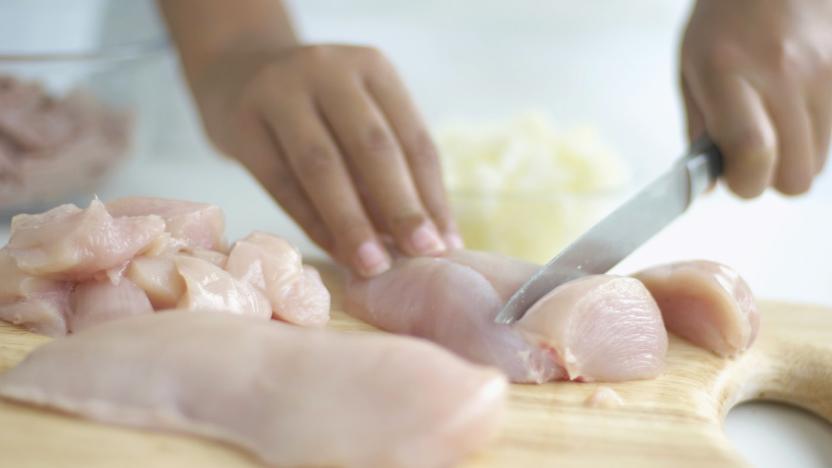EColi
Latest

Researchers develop E. coli strain that 'eats' carbon-dioxide
While you're stuffing turkey leftovers in your belly, the last thing you want to think about is E. coli. But spare a thought for the bacterium, it's not always here to harm you (and it needs to eat, too). According to a new paper published in Cell, scientists have developed a strain of E. coli that feeds on carbon dioxide. As Nature explains, the bacteria usually prefer sugars (glucose), but the lab-created strain could be used to create biofuels with a lower emissions footprint than conventional production methods.

Researchers want to block HIV with a 'therapeutic' virus
Despite the best efforts to date, a vaccine for HIV remains beyond our reach. It seems every time researchers get close, the virus mutates to stay a step ahead, creating a biological arms race. But a team of scientists at the University of Texas believe they may have found a way to hobble HIV and drastically reduce its virulence. They want to infect susceptible cells with a "good" virus first, one that will effectively immunize them against HIV.

I played God with The Odin's DIY CRISPR Kit
Twenty-three years after its cinematic debut, I finally understand where Alec Baldwin was coming from in the 1993 psychological thriller Malice. The power to bring life where once there was none is a potent drug. I was recently afforded the opportunity to create a new kind of bacterial life thanks to the DIY Bacterial CRISPR Kit from Bio-Hacking collective The Odin. I honestly haven't had this much fun doing science since AP Chem.

Nanoflowers can detect bacteria before they make you sick
You typically won't know you're infected with E. coli until it starts wreaking havoc on your gut. That's why a group of scientists from Washington State University are building a handheld biosensor that can sniff out even tiny amounts of pathogen in food. The biosensor will rely on flower-shaped nanoparticles the team developed. These nanoflowers can trap bacteria enzymes and amplify them, so they can be recognized by a simple pH strip. According to team leader Yuehe Lin, they plan to use the nanoflowers to create a simple biosensor similar to a pregnancy test strip that anyone can use.

Scientists use lasers to sniff out E. coli on food
Scientists have developed a better sniff test for that plate of leftovers that's been hanging out in your fridge. Researchers from the Korea Advanced Institutes of Science and Technology are using lasers (the jury is out on whether they're of the "friggin'" variety or not) to determine just how much bacteria is crawling all over your stored food. MIT Technology Review says that by shooting a red, coherent laser at chicken breast coated with E. coli and Bacillus cereus, the Korean scientists were able to detect changes in laser refractions, indicating the bacteria's presence.

Bacteria computer is good at math, even those pesky story problems
Scientists have successfully developed a computer out of E. coli bacteria (again), which has managed to solve the Burnt Pancake Problem -- at least in a limited form. The problem involves creating a golden-side-up stack of pancakes out of all different size pancakes, each of which is burned one side, with the largest pancake on the bottom tapering up to the smallest on top. You can only use a spatula to flip a top section of pancakes, and the math problem is to sort the stack in as few flips as possible. In addition to making regular human mathematicians very hungry, the problem exponentially spirals out of control -- for six pancakes there are 46,080 permutations, for 12 pancakes there are 1.9 trillion. The E. coli computer differs from a regular computer in that it turn each piece of DNA into a simulated pancake, with sections of DNA being flipped to hide from a killer antibiotic if they get the answer right, and killed if they get the answer wrong. With millions of "computers" able to fit in a drop of water, scaling won't be an issue once they figure things out, but for now E. coli can only figure out how to sort two pancakes.[Thanks, Hraefn]




